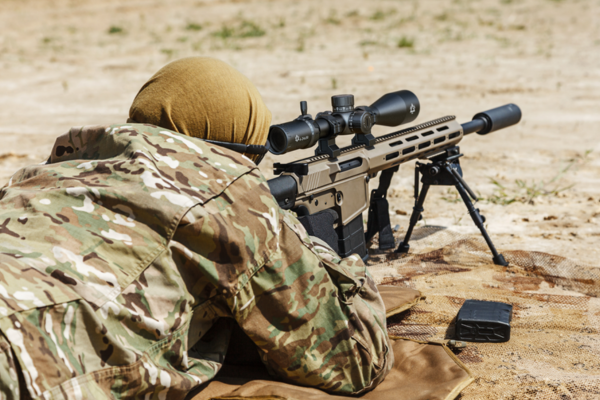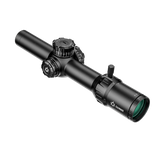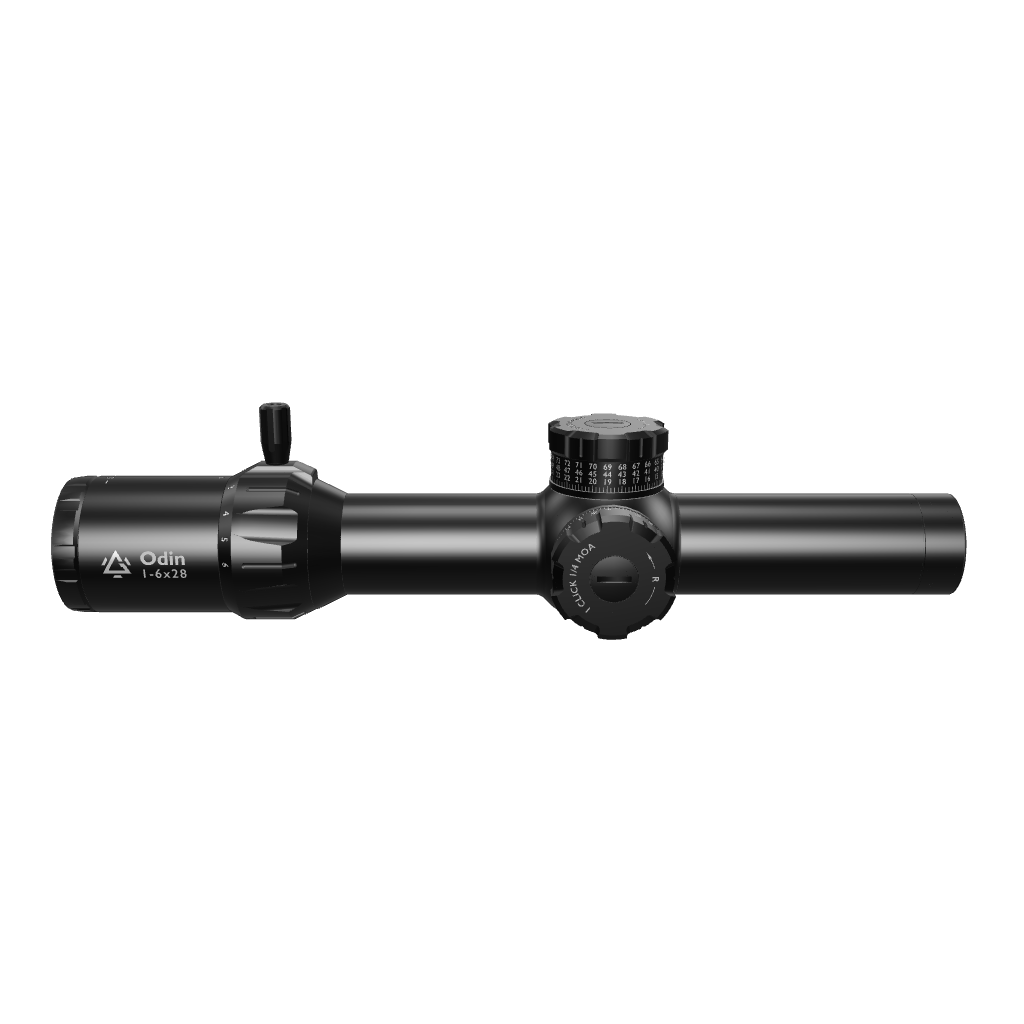Everything to Know About HPVOs
When you're reaching out to 600 yards, 800 yards, or even past the 1,000-yard mark, you're in HPVO territory.
Here’s the thing...unlike LPVOs, which are for casual plinking or home defense, and MPVOs, which are more suitable for mid-range shooting, an HPVO is an absolute precision tool. It is made for deliberate, calculated shooting.
An HPVO will change everything for any shooter. The efficacy of the scope makes it almost impossible to resist taking shots just to see it work. At 500-700 yards, I kept aiming at the smallest possible targets while getting consistent hits.
If you are aspiring to take long shots across valleys, compete ringing steel in PRS, or are on the path to becoming a tactical shooter who needs first-shot impact, you need to understand what an HPVO is, how, and why it works, and how using an LPVO will help level up your game.

What is an HPVO?
H.P.V.O. stands for “High Power Variable Optic,” and it describes a category of scopes with outstanding magnification range, usually starting at 5x or 6x on the low end and reaching up to 25x, 30x, or even 36x on the high end.
Here are the typical magnification ranges for HPVOs
- 5-25x56 – Common in PRS and tactical rifles
- 6-24x50 – Long-range hunting standard
- 7-35x56 – Extreme long-range, ideal for targets past 1,000 yards
Features of An HPVO.
The beauty of an HPVO goes beyond the extra magnification range it provides. HPVOs come loaded with long-range features: you get precision turrets, detailed reticles, large objective lenses, and optical clarity that makes far-off targets look like they're 100 yards away.
Here are the key components that make an HPVO tick- and I will add in some practical HPVO shooting tips that most people tend to overlook:
1. HPVO Reticles are Mostly FFP
Everyone has their preferences when it comes to FFP vs SFP reticles, but for an HPVO, an FFP simply makes more sense.
- Most HPVOs use FFP reticles, meaning the reticle scales with magnification.
- An FFP reticle makes things a lot easier if you are using holdovers, ranging, and wind calls at varying zoom levels.
An SFP makes sense if you always shoot at maximum magnification. However, HPVOs go up to 36x, so you are probably not going to be shooting at maximum magnification.
An FFP gives you a lot more flexibility and adaptability, especially when you are dealing with such high levels of magnification.
However, an SFP can save you some cash.
2. HPVOs Have Adjustable Parallax
HPVOs have a side parallax adjustment, which allows you to manage optical distortion by yourself.
Obviously, at high magnification, it is crucial to prevent optical distortion from ruining your shots. A small parallax error at 25x can throw you off by several inches at 800+ yards.
Most LPVOs and some MPVOs have fixed parallax settings, so you might need to learn to adjust your parallax if you are transitioning to an HPVO.
Tip: Always Dial in Your Parallax
Always dial in parallax for your shooting distance. Don’t just leave it at “infinity” and hope for the best.

3. The Turrets are Built for Dialing
All scopes have turrets that work, but the turrets on an HPVO are precision-machined, and the tactile clicks are as audible as they can be.
Most offer zero stops, tool-less resets, and reliable tracking for dialing elevation and windage.
Pro Tip: Always Perform a “Box Test”
Always perform a “box test” after mounting an HPVO to verify that the turret adjustments are tracking true.
4. Objective Lenses are Larger
HPVOs feature 50mm or 56mm objective lenses to gather more light. This keeps images bright and sharp, even at dawn, dusk, or in heavy magnification.
Note that bigger glass means heavier glass. Make sure your rifle build can handle the added weight without throwing off your balance.
5. Precision Reticles
Expect MOA or MIL-based grid reticles, often with hash marks for wind, elevation, and range.
Modern HPVOs even include Christmas tree-style layouts for ultra-precise holdover data.
Tip: Know your reticle.
Learn its subtensions and how they translate to your specific ballistic profile—it’s more than just crosshairs.
Best Uses for an HPVO
HPVOs shine in situations where precision and distance matter most:
| Use Case | Why HPVO Works |
| Long-Range Hunting | Spot and ethically take game at 500+ yards |
| PRS / Competition Shooting | Fast, repeatable adjustments; easy-to-read reticles for precision stages |
| Tactical Marksman Roles | Extreme accuracy and target identification at extended ranges |
| Benchrest & F-Class | Focused on the smallest groups possible at 600-1000 yards |
| ELR (Extreme Long Range) | Target engagements beyond 1 mile, using specialized ammo and high ballistic data |
Not-So-Obvious HPVO Tips for Using an HPVO
1. Mirage Can Ruin Everything
At 25x or higher, mirage becomes a serious factor. Heat waves will blur your target like a watercolor painting. Don’t be afraid to dial back to 15x or 18x—you’ll often get a clearer image and better shot placement.
2. Spend Wisely – On Glass and Mounts
Dropping $2,000 on an optic and using a $50 mount is like putting race tires on a rusty sedan. Get a high-quality mount or precision rings that lock everything down and maintain zero under recoil.
3. Exit Pupil and Eye Relief Shrink at High Magnification
As you zoom in, the eye box tightens. A small exit pupil means you need to stay perfectly aligned, which can be tough infield positions. Practice your cheek weld and consistency.
4. Know Your Click Value
Most HPVOs use 0.1 MIL (MRAD) 0.36” at 100 yards or ¼ MOA (0.25” at 100 yards)
Pick one system and stick with it across your scope, ballistic calculator, and spotter.

Final Thoughts- HPVOs are Totally Worth It
If you're consistently engaging at long distances and need repeatable accuracy, an HPVO is exactly the kind of optic you want to invest in.
But, like any tool, it requires skill. You’ve got to know your reticle, understand your adjustments, and work through the quirks that come with serious magnification.
Train hard. Shoot smart. And let that glass work for you—not the other way around.
You might also be interested in LPVOs vs HPVOs, and other shooting tips like how to read scope numbers. Gunnr has you covered.







